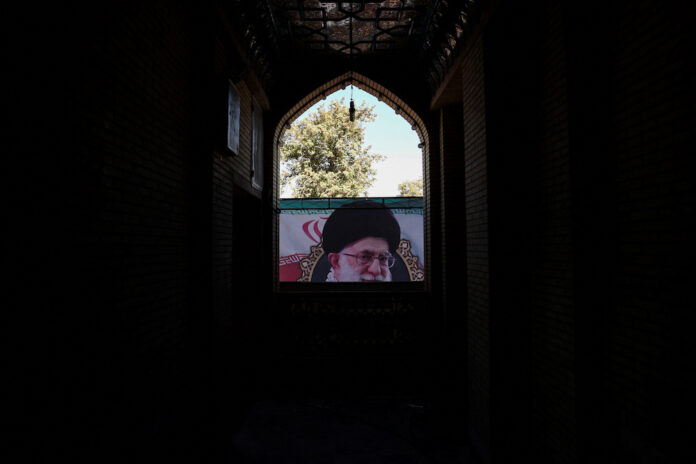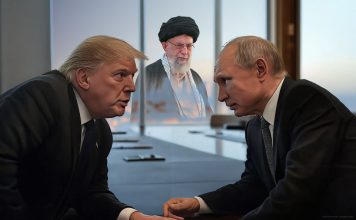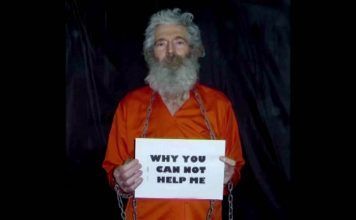
By Ahmad Rafat
A terrorist attack on the Shah Cheragh Shrine in Shiraz on Aug. 13 left one person dead and seven others injured, according to the local authorities.
Shortly after the attack on the Shia shrine, local judiciary agents said that they had arrested a 25-year-old Afghan national from the northwestern province of Badakhshan.
Yet Brigadier General Ramazan Sharif, the spokesperson for the Islamic Revolutionary Guards Corps (IRGC), quickly dismissed the report by the head of the prosecutor’s office. A few hours later, the prosecutor’s office revised its initial report, explaining that authorities had arrested 10 foreign nationals. The next day, he changed the number again, saying that 20 people had been arrested but did not disclose their names and nationalities.
A previous mass shooting in the Shah Cheragh Shrine Mosque on October 26, 2022, had left at least 13 people dead and another 20 injured. According to the Iranian state media, local law enforcement forces had killed one terrorist and arrested 12 Azeri nationals. Eventually, five Afghan nationals were arraigned at Brach-1 of Shiraz Revolutionary Court on Feb. 5., two of whom, Mohammad Rahmani and Mohammad Rameez-Rashidi, were found guilty and executed on July 8.
Iranian state media accused the Islamic State (IS) of both attacks on the Shah Cheragh Shrine. IS released a statement through its official organ, “Al-Naba,” claiming responsibility for the October 2022 shooting, but has not commented on the Aug. 13 attack.
There is no shortage of speculation on who was behind these attacks. Some believe that the IRGC helped IS and that it had advanced knowledge of the attack. In November of last year, the Black Reward hacktivist group hacked into the semi-official Fars news agency computer systems and published several documents, one of which was related to the attack on Shah Cheragh Shrine. According to the document, despite having knowledge of the planned attack on the shrine, the commander of the IRGC in Shiraz took no action to stop it.
[aesop_image img=”https://kayhanlife.com/wp-content/uploads/2023/08/2023-08-13T190632Z_1_LOP425513082023RP1_RTRMADP_BASEIMAGE-960X540_IRAN-ATTACK-2-e1692610428771.jpg” panorama=”off” credit=”STILL PHOTOGRAPHS OF AMBULANCE, VICTIMS. REUTERS./” align=”center” lightbox=”on” captionsrc=”custom” captionposition=”left” revealfx=”off” overlay_revealfx=”off”]
Many people believe the latest attack on Shah Cheragh Shrine is another attempt by the government to silence the national protest sparked by the death of Mahsa (Zhina) Amini while in the custody of the Morality Police (Guidance Patrol) on Sept. 16, 2022.
Mojtaba Vahedi, a political analyst, has no doubt that the Islamic Republic had a hand in the recent attack on Shah Cheragh Shrine. Mr. Vahedi, currently based in Washington D.C., was the managing editor of the Tehran-based Aftab Yazd newspaper from 1999 to 2009. He was also the spokesperson for Mehdi Karoubi, a candidate in the controversial 2009 presidential election.
Kayhan Life recently spoke to Mojtaba Vahedi about the events in Iran.
The regime has repeatedly boasted that it spent $50 billion in Syria to prevent IS from getting a foothold in Iran. At the end of the war against the Islamic State in Iraq, the former commander of the Qods Force, Ghasem Soleimani, announced the IS’s complete demise. Yet IS has allegedly carried out at least four terrorist operations inside Iran in recent years, including the attacks on the Ruhollah Khomeini Mausoleum and the Majlis (Iranian Parliament) in Tehran on June 7, 2007, and the two attacks on Shah Cheragh Shrine in Shiraz.
Claiming that the Syrian campaign was aimed at fighting IS was a blatant lie. It was not believable. IS forces in Syria could not go through Iraqi territories to enter Iran, given the widespread presence of Iranian-backed forces in Iraq, including the [Iraqi] Popular Mobilization Forces (PMF).
Also, Iranian troops in Syria would not have solved any problem if IS forces were to enter Iran from other countries.
In an interview with Seda va Sima [the Islamic Republic of Iran Broadcasting (IRIB)], Mahmoud Chaharbaghi, the director of the training program at the IRGC’s [engineering wing] Khatam-al Anbiya [Construction] HQ, said that Iranian forces were in Syria long before the formation of IS.
‘[Iran’s Leader, Ali] Khamenei ordered Haj Ghasem to go to Syria and rescue [President] Bashar al-Assad,’ Chaharbaghi said.
In a letter to Khamenei five years earlier, Ghasem Soleimani had reported the end of IS rule.
The supporters of the Islamic Republic argue that Soleimani had announced an end to the IS rule, but not the elimination of IS. If that assertion is correct, then the Syrian campaign aimed not to eliminate IS, but to prevent the formation of a government hostile to Bashar al-Assad.
A study has shown that IS’s primary tactics involve suicide attacks and bombings. Why then does it conduct military attacks in Iran, especially in well-guarded areas?
Those operations in Iran blamed on IS are dissimilar to all other IS military and terrorist actions. IS carries only suicide operations, so the culprits die in the attack and are never arrested. As a result, there are no televised confessions.
All operations in Iran which are blamed on IS have been amateurish terrorist acts with no apparent objectives, which have inflicted minimum damage. For instance, the attack on the Majlis did not damage the building and offices, and no one was hurt.
According to authorities, those arrested after the first attack on Shah Cheragh last year were Azeri nationals. Yet they executed two Afghan citizens for that attack a few weeks ago. They have reportedly arrested dozens of foreigners after the latest attack, but have not disclosed their names or nationalities.
The reports blaming IS for the attacks have been amateurish and full of contradictions. For instance, it was astonishing how easily the culprits entered Shah Cheragh in the first attack last year. Also, footage of the attacker’s arrest showed him to be uninjured. Yet a few hours later, they said he had died of serious injuries.
Information about the identity and nationality of the attackers has also been full of contradictions. For example, they initially said that all attackers were citizens of the [Republic] of Azerbaijan, but in the end, they hanged two Afghan nationals.
Many believe that the regime was behind these attacks. Could the latest attack on Shah Cheragh aim to create fear and terror among people, given that it occurred in the lead-up to the first anniversary of the death of Mahsa (Zhina) Amini and the national “woman, life, freedom” uprising?
The regime’s leaders undoubtedly know that the opposition and even rational supporters of the governing system do not believe the state’s amateurish scenarios.
The question on the minds of many of the regime’s supporters is why two similar attacks on the same target occurred less than a year apart, despite the government boasting about the country’s security capabilities.
What is puzzling is the footage showing the moment that the armed terrorist in the second attack was arrested. In the clip, the attacker is chased by an unarmed person and eventually surrendered without firing a single shot.
Can the regime rationalize its suppression of domestic dissent by creating a foreign enemy, and blame these attacks on IS and non-Iranians?
The Islamic Republic needs no excuse to crack down [on protesters]. However, these actions are used for various reasons, including to appease a small and uninformed minority that supports the regime.
With the anniversary of the 2022 revolution nearing, beyond wanting to crack down on [protesters], the regime aims to create fear among the population, discourage street protests and scare families so that they prevent the courageous youth from protesting.
Nevertheless, the outcome will be different from what the government expects.
OPINION: Iranian State May Have Masterminded Deadly Attack on Shiraz Mosque











